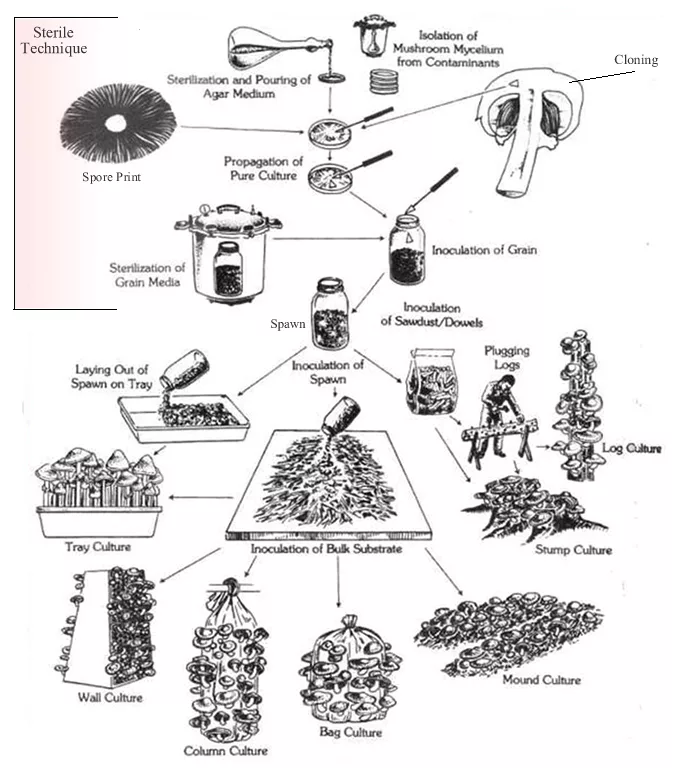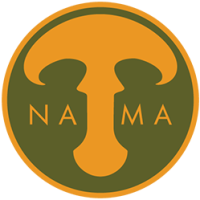Grow Mushrooms at Home
You too can grow mushrooms at home. It’s easier than you think!
Stages for the home cultivator:
- Buy a mushroom cultivation kit: If you are a beginner, buying a kit really helps you get a feeling for how mushrooms grow. See our Cultivation Supplies links page for kits.
- Purchase spawn: From a local or online supplier and inoculate your own substrate, for example straw. This part is easy.
- Make your own mushroom cultures and spawn: This is challenging. You will need a sterile workplace and a means of sterilizing agar and grain. For a sterile work area you will need glove box or for sterilization you will need a pressure cooker or autoclave.
An Overview of Mushroom Cultivation

When you are ready to try your hand at cultivation, here is what you should do
- Decide which species of mushroom you want to cultivate. Commonly Cultivated Species
- Oyster Mushrooms are the easiest species to grow.
- Beginners should start with Oyster mushrooms.
- Obtain a culture started from spores (e.g. a clean spore print) or by cloning a fresh mushroom.
- This is challenging. A pressure cooker is necessary, and you must have a sterile workplace
- Beginners should proceed to step 3 and purchase ready-made spawn from a supplier.
- Obtain spawn for your species of choice.
- Make your own spawn from a culture or
- Purchase spawn from a mushroom cultivation supplier.
- Decide what material (called the substrate) that you want to grow you mushrooms on. See page on Commonly used substrates.
- Treat your substrate of choice. Treatments include pasteurization, sterilization, lime bath, peroxide bath and “cold fermentation.” See page on Preparation of Substrates.
- Inoculate your substrate with the spawn.
- Put your inoculated substrate in an environment with the recommended conditions for colonization (e.g., 75° F for Pleurotus ostreatus)
- Allow the substrate to become fully colonized by the mushroom mycelium. (called “the spawn run”)
- When the little mushrooms (called “primoidia”) first appear (called pinning), put the substrate with primoidia in an environment with the recommended conditions to promote fruiting. This will mean controlling temperature, light, humidity, and air flow that your chosen species likes.
- Harvest your mushrooms! Ideally, just before spores are released.

NAMA Store >